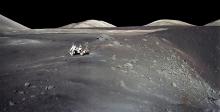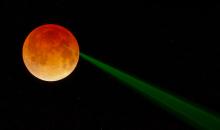Listen to today's episode of StarDate on the web the same day it airs in high-quality streaming audio without any extra ads or announcements. Choose a $8 one-month pass, or listen every day for a year for just $30.
You are here
Critics
Robert Goddard is known as the “father” of American rocketry. Yet his contributions to the field are less than they might have been. Goddard did most of his work in secret — he didn’t collaborate outside his own team, and he didn’t publish many results.
In part, that secrecy was the result of an editorial that appeared in the New York Times 100 years ago today.
Goddard had just published a paper in which he outlined his ideas for sending rockets into space. To confirm that a rocket was actually working, he suggested using it to slam a small amount of explosives into the new Moon and watching through telescopes.
The Times objected. "That Professor Goddard ... does not know the relation of action to reaction, and of the need to have something better than a vacuum against which to react — to say that would be absurd. ... He only seems to lack the knowledge ladled out daily in high schools."
After that, Goddard avoided publicity. He continued his work, though, and launched the world’s first liquid-fueled rocket, in 1926. When that brought criticism from his neighbors, he moved his work to New Mexico.
There, he produced many patents for ideas that were incorporated into future rockets and spacecraft.
And on July 17th, 1969 — the day after Apollo 11 headed for the Moon — the Times published a retraction. "It is now definitely established that a rocket can function in a vacuum as well as in an atmosphere," the paper wrote. "The Times regrets the error."
Script by Damond Benningfield





